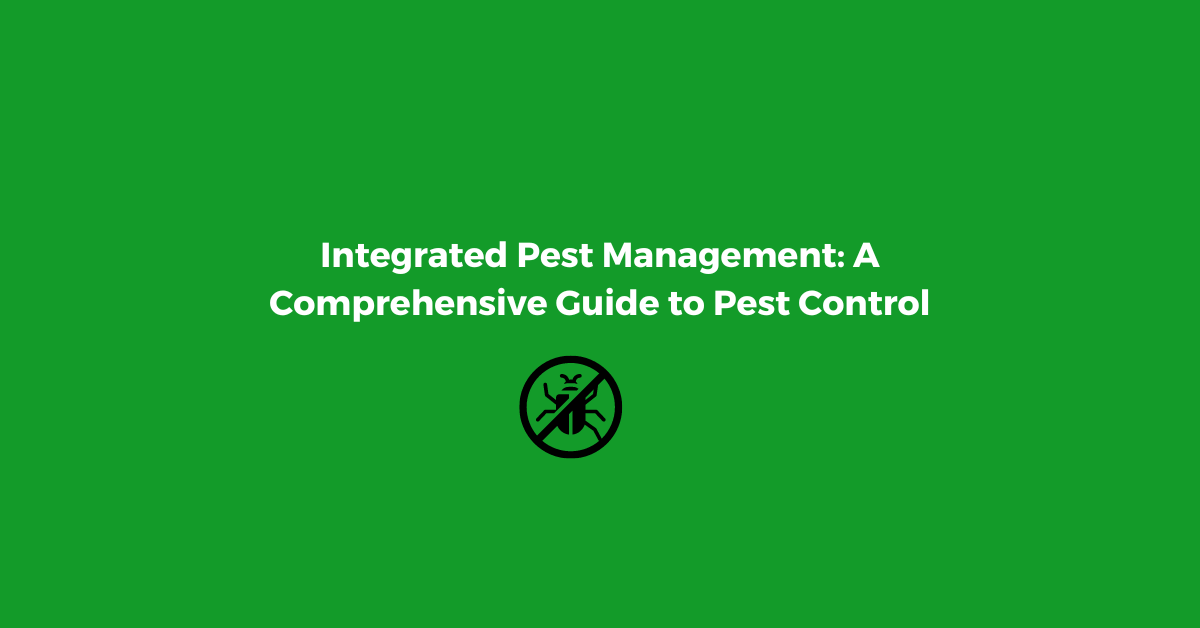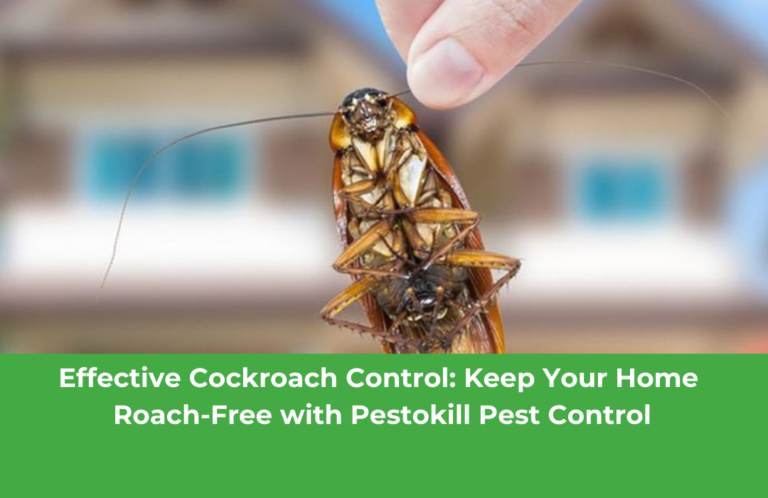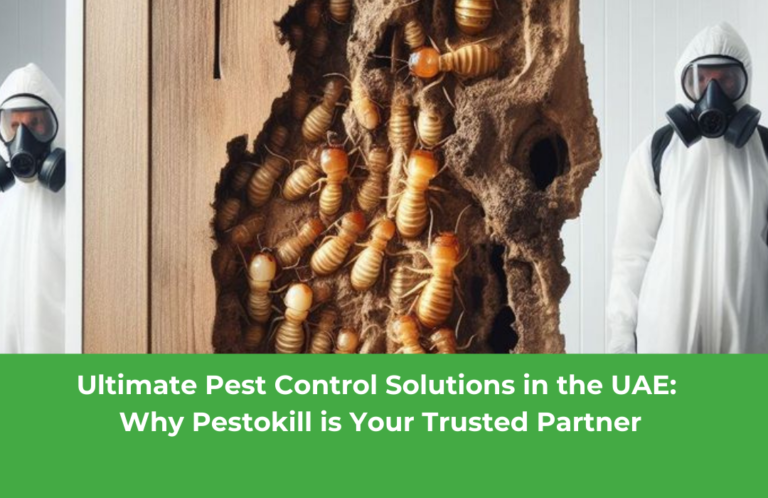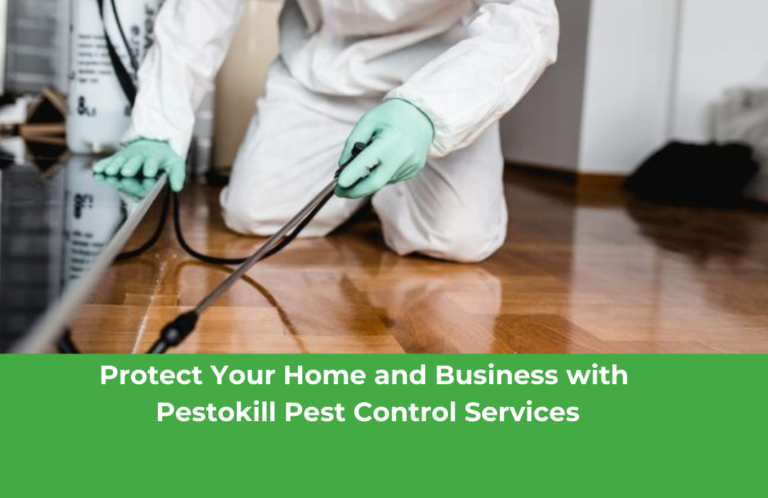Integrated Pest Management: A Comprehensive Guide to Pest Control
Are you tired of trying traditional pest management methods? If so, our gift for you is Integrated Pest Management (IPM). IPM is an eco-friendly pest-control process that aims for long-term benefits. IPM is also the best option to manage all kinds of pests anywhere—in urban, agricultural, wildland, or natural areas. What exactly is Integrated Pest…
Are you tired of trying traditional pest management methods? If so, our gift for you is Integrated Pest Management (IPM).
IPM is an eco-friendly pest-control process that aims for long-term benefits. IPM is also the best option to manage all kinds of pests anywhere—in urban, agricultural, wildland, or natural areas.

What exactly is Integrated Pest Management (IPM)?
IPM is an environment-friendly approach that focuses on the long-term prevention of pests or their damage by applying techniques such as biological control, habitat manipulation, modification of cultural practices, and resistant varieties.
In this process, we use pesticides only after monitoring indicates that they are needed according to established guidelines, and treatments are made to remove only the target organism. Pest control materials are selected and applied in such a way that minimizes risks to human health, beneficial and nontarget organisms, and the environment.
What do you mean by a pest?
Any organism that poses a threat to desirable plants in fields and orchards, landscapes, or wildlands, or damages homes or other structures, can be called a pest. It is without any doubt that pests can also impact human or animal health.
Pests can spread disease or simply be an annoyance. Any disease-causing organism, whether a plant (weed), vertebrate (bird, rodent, or other mammals), invertebrate (insect, tick, mite, or snail), nematode, pathogen (bacteria, virus, or fungus), or other pesky organisms that may harm water quality, animal life, or other parts of the ecosystem, can be put under the category of PESTS.
IPM: An Ecosystem Approach that everyone should consider
Every pest hater can rely on IPM and take action to keep pests from becoming a problem. We can do this by growing a healthy crop that can withstand pest attacks, using disease-resistant plants, or caulking cracks to keep insects or rodents from entering a building.
Every pest treatment should have a strategy. Simple elimination of pests won’t give any results. Instead, converting to IPM gives you a lot of benefits. Pest elimination can be done along with looking at environmental factors that affect the pest and its survival ability. With this information, you can make pests’ lives difficult.
How can we implement IPM?
IPM consists of these three steps:
- Monitoring– Monitoring means observing the presence of pests in your field, landscape, forest, building, or any other site to identify the numbers or damage they’ve caused.
- Pest identification– After monitoring the site, correct identification of the pest is crucial to knowing whether a pest is likely to become a problem and determining the best management strategy.
- Management: Finally, after keeping track of the pest and gathering information about it, its habitat, and environmental factors, you can decide whether it can be tolerated or a problem that needs to be controlled. In this way, we can formulate and select the most effective management methods.
Different pest management approaches
Pest control can be done effectively by using a combination of methods that work better together than separately. Long-term results are also assured while enacting this.
Let’s see how it goes.
Biological control
We can biologically control pests and their damage by using natural enemies—predators, parasites, pathogens, and competitors. There are numerous natural enemies for invertebrates, plant pathogens, nematodes, weeds, and vertebrates.
Cultural controls
Practices known as “cultural controls” aim to lower pest reproduction, survival, dispersal, and establishment rates. Changing irrigation techniques, for instance, can lessen pest issues because too much water can increase weeds and root disease.
Mechanical and physical controls
Mechanical and physical controls either directly kill pests or block pests’ entry. They make the environment unsuitable for them. Mulches for weed control, soil sterilization for disease control, and barriers like screens to keep birds and insects out are examples of physical controls. On the other hand, a rodent trap is an example of mechanical control.
Chemical control
Pesticides are used in chemical control. In chemical control, pesticides are not necessary and are used together with other approaches for more effective, long-term control in IPM. Pesticides are chosen and applied in such a way that their potential harm to people, nontarget organisms, and the environment is minimized.
The IPM approach helps you select the best eco-friendly pesticides and be the safest for other organisms and air, soil, and water quality. Besides, pesticides are used in bait stations rather than sprays. If the situation demands it, spot spray can be applied to a few weeds instead of an entire area.
Pestokill uses the IPM approach for long-term pest control
Do you know what the success mantra of Pestokill pest control solutions is? It is none other than integrated pest management solutions. Pestokill combines this game-changing approach with other pest control mechanisms. And the result is amazing.
Wrapping up
In conclusion, we can say that Integrated Pest Management is a holistic approach to pest control that emphasizes long-term solutions while minimizing environmental impacts. By combining cultural, biological, and chemical control methods, IPM provides effective pest management strategies that are both economically viable and environmentally friendly. Implementing IPM practices can also help reduce pesticide use, promote biodiversity, and protect human health and the environment.







